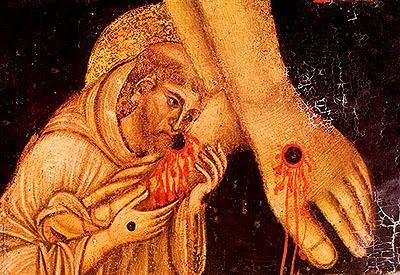The Daughter of St Teresa
Today in Carmel we celebrate the feast of St Maria Maravillas of Jesus. Most of you may not have heard of her, but she is an important and, indeed, controversial figure within Discalced Carmel. Her mission in life was that of reform of Teresian Carmel, what we might call a reform of the reform. That reform has met with various reactions and has led to complications.
St Maravillas, as we usually call her, was born in Madrid in 1891 to a wealthy family. Her father was a minister in the Spanish government and later ambassador to the Holy See; he would inherit the title of Marquis of Pidal. Perhaps the greatest influence on her life was her grandmother who helped form her in the faith and gave her a great love for the saints. Young Maria was inspired to make a private vow of chastity at the age of five, which was extraordinary. She set her sights on religious life, and when old enough, she entered the Discalced Carmelite sisters in 1919, entering the monastery at Madrid, at the El Escorial. She made profession in 1920.
God was already revealing to her the plan he had for her life, and in 1923 she made it known that she wished to found a new Carmelite monastery at Getafe in the centre of Spain, near the monument that marked the heart of the kingdom. The Bishop of Madrid gave his permission, a sign to her that this was the will of God, and so with three sisters she founded what would become the first house of the reform. She made her final profession at El Escorial in 1924 and was appointed prioress of her new foundation in 1926.
God's will for this reform was further revealed in the miraculous preservation of Maravillas during the Spanish Civil War. She endured much suffering, but every difficulty also revealed a new opportunity. After the Civil War, she founded a number of monasteries, directing them in austerity and fidelity to St Teresa. In time this would cause problems particularly when the reforms of Vatican II were being implemented. Maravillas's monasteries preferred to go in another direction. In the latter years of her life she feared a lax approach would enter into the cloister. Following the council, when new constitutions were being formulated, two sets were composed: an updated version of 1581 constitutions to satisfy those monasteries which wanted to maintain the austerity laid down by St Teresa - as desired by St Maravillas; and a second set of constitutions newly written by the Order, approved in 1991. Today, Carmelite monasteries can choose which constitutions they wish to adopt.
Maravillas's last years were plagued by ill health, but she accepted her suffering with great serenity, guiding her foundations on the way of St Teresa. She died on the 11th December 1974. Her last words: 'What happiness to die a Carmelite'. Her Cause was opened in 1980. She was beatified in 1998 and canonised in 2003.
As I mentioned earlier, Maravillas is a figure of controversy, she is blamed by some within the Order for the complication of two sets of constitutions. However, it cannot be ignored that while there was a danger of laxity entering into religious life, and this has indeed come to pass even within the cloisters of Teresian Carmel, she sought to fulfil what Vatican II called on all Orders and congregations to do: to go back to the charism of the founders. As a daughter of St Teresa, Maravillas understood this was embracing a life of strict observance, sacrifice and prayer. Madre's reform was one of austerity in the service of Christ for the salvation of souls, it made her enemies when she founded the first Carmel of the reform, San Jose in Avila; Maravillas understood that her desire to remain true may well cause problems in a world where such a life is no longer seen as appropriate given the age we live in.
God has spoken through Maravillas's life. She is an example of fidelity to religious life and to the mission of Carmel in the Church and the world. In a time of great confusion, she not only encouraged her sisters but also others in the Church who saw the worst excesses of the post-conciliar period overcome and undermine the genuine reforms of the Second Vatican Council. She remained in the heart of the Church, and though she did live long enough to see the work of Pope St John Paul II and Benedict XVI to get the authentic vision of the council back on track, she anticipated it by leaving houses of contemplation, sacrifice and evangelical zeal. Today, among the many Carmelite monasteries who look to St Maravillas as the reformer of the reform, is San Jose in Avila, the first foundation of the Teresian reform, and the Encarnacion in Avila, St Teresa's original community.
UPDATE: For those interested in the complicated controversy which surrounded the renewal of the Constitutions, here is an article which gives you a sense of what was going on. The author comes to her own conclusions on the issue and the 1990 Constitutions. It needs to be said that we must accept that each side in the controversy was acting in good faith and sought to be faithful to the reform of St Teresa.
UPDATE: For those interested in the complicated controversy which surrounded the renewal of the Constitutions, here is an article which gives you a sense of what was going on. The author comes to her own conclusions on the issue and the 1990 Constitutions. It needs to be said that we must accept that each side in the controversy was acting in good faith and sought to be faithful to the reform of St Teresa.




Comments
Post a Comment